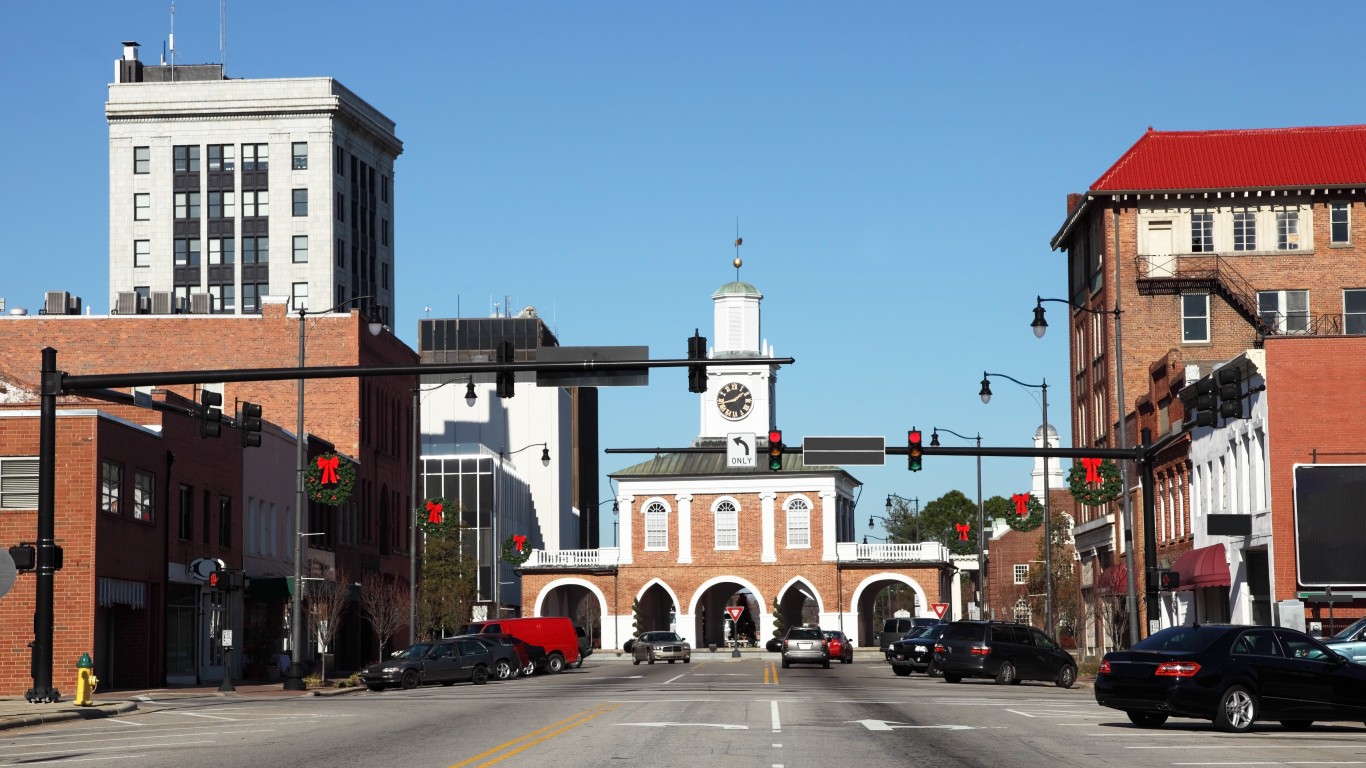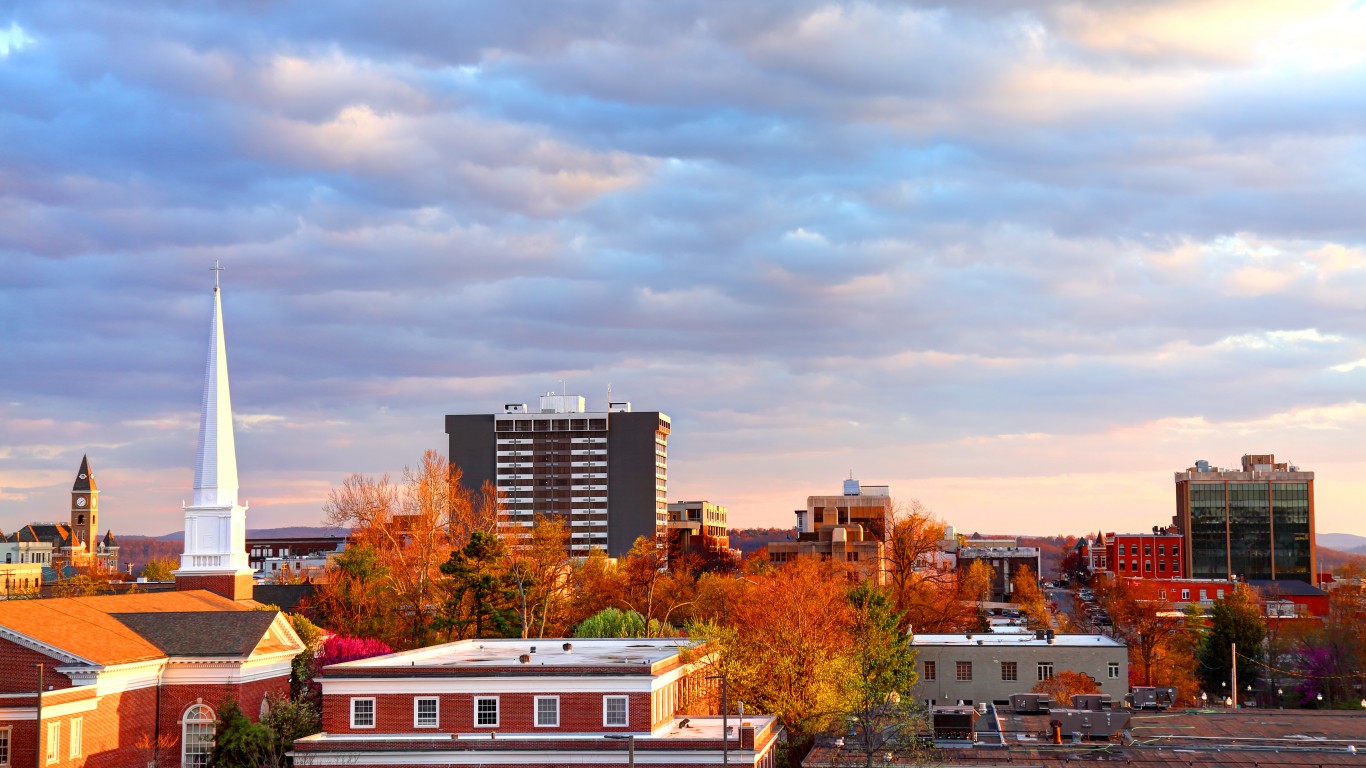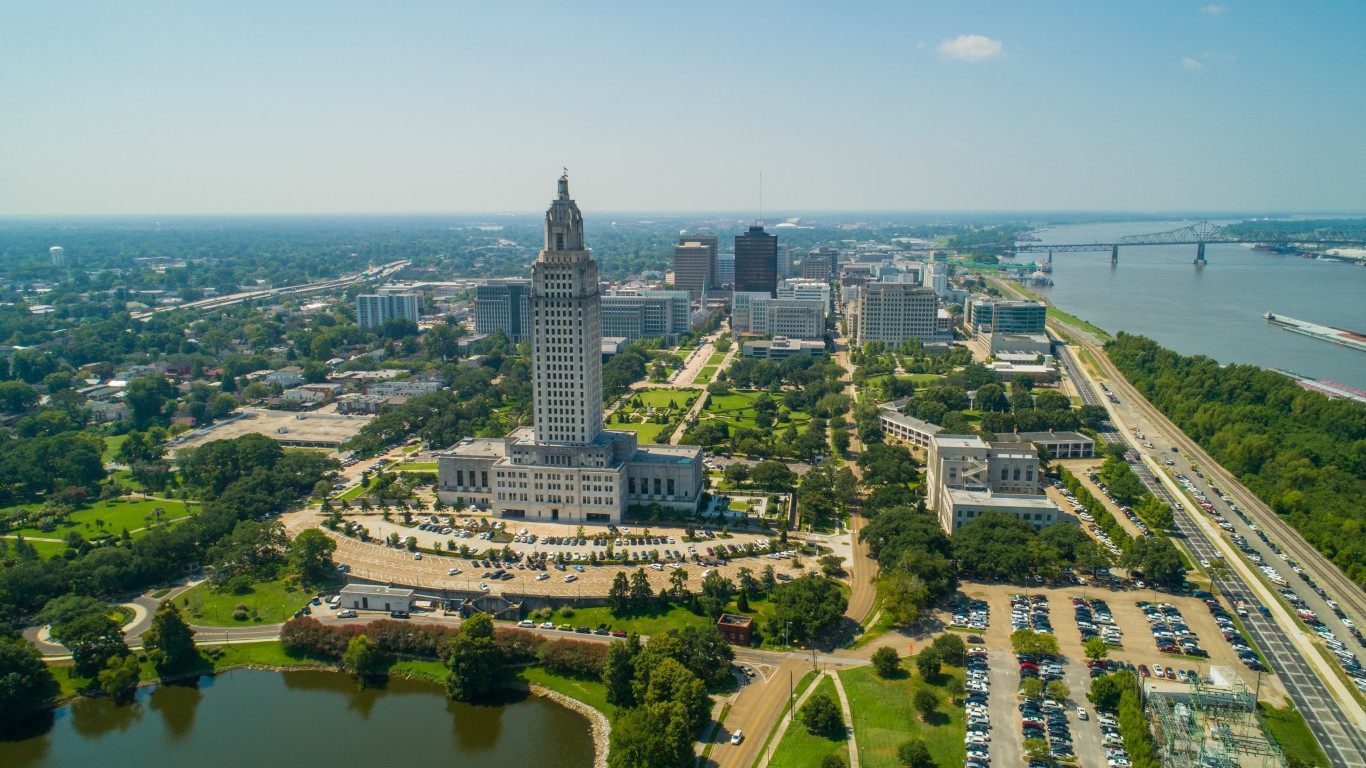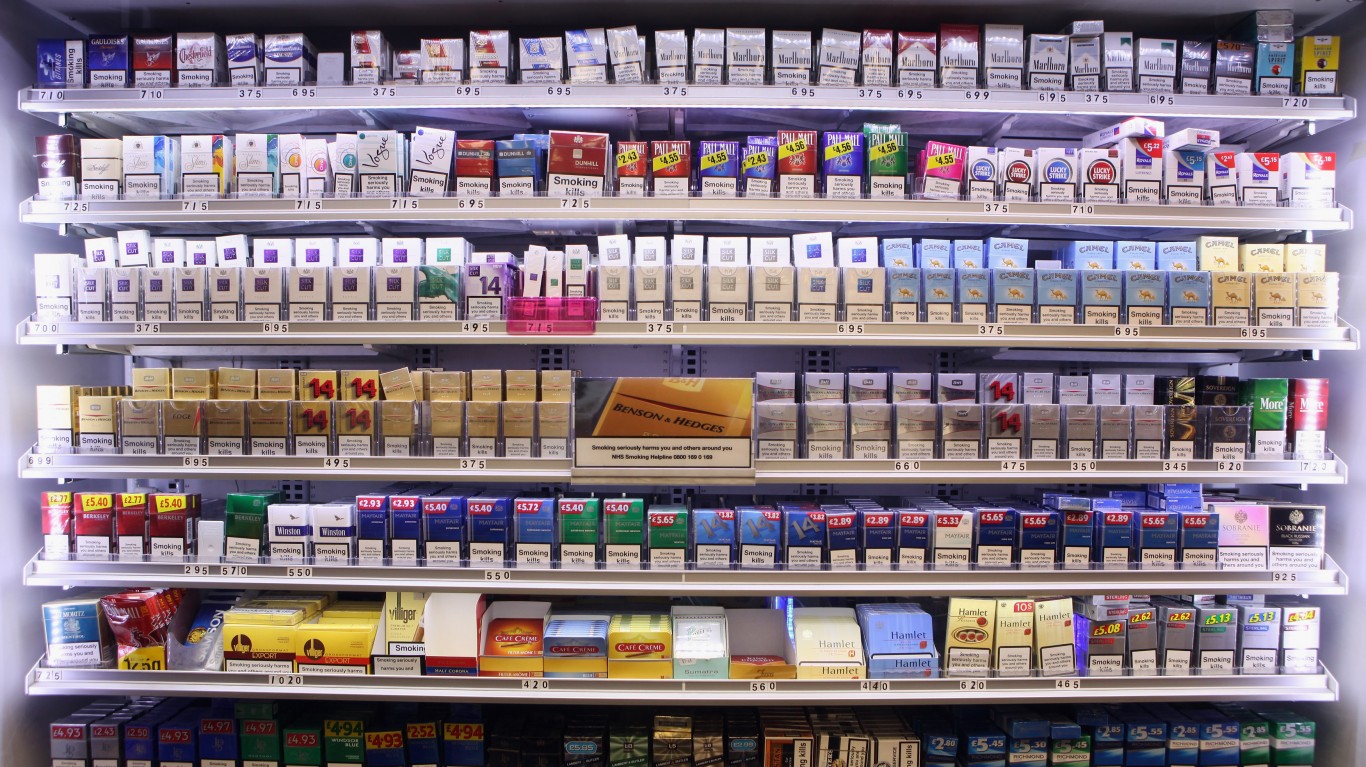
Statistics from the Centers for Disease Control and Prevention (CDC) show that the percentage of adults who smoke in America declined from nearly 21% in 2005 to 14% in 2019. Although any decrease is welcome news, however, plenty of people still light up — and for smokers the risk of serious health issues like lung cancer and chronic obstructive pulmonary disease (COPD) remains high.
The National Institute of Health’s National Cancer Institute estimates that there will be about 235,760 new lung and bronchus (bronchial) cancer cases in 2021, resulting in about 131,880 deaths. That will represent 21.7% of all cancer deaths, meaning that more people will succumb to these cancers than to any other form of the disease.
Though it doesn’t claim as many victims as lung cancer, COPD, a term for respiratory disorders including emphysema and chronic bronchitis, was the fourth leading cause of death in the U.S. in 2018. According to the CDC, between 80% and 90% of lung and bronchus cancer deaths and about 80% of those related to COPD can be linked to cigarette smoking.
As of March of this year, smoking in bars, restaurants, and both private and public workplaces has been banned in 29 states and territories as well as the District of Columbia. Several other states prohibit smoking in bars and restaurants but not workplaces, or on government worksites but not in private offices. In addition, hundreds of cities and counties around the country have prohibitions of their own. Some states also levy heavy taxes on cigarettes — as much as $4.35 per pack in Connecticut and New York. These are the states with the highest and lowest cigarette taxes.
24/7 Tempo has reviewed data from several sources to determine which metropolitan statistical areas — either individual cities or agglomerations of cities, sometimes across state lines — report the highest rates of adult smoking, self-reported fair or poor health, and incidence of lung and bronchus cancer. These are the 40 U.S. cities with the shortest life expectancy.
Click here to see the American cities where the most people smoke.
Methodology
To identify the cities with the highest percentage of smokers, 24/7 Tempo reviewed data from the 2021 County Health Rankings & Roadmaps, a joint study by the Robert Wood Johnson Foundation and the University of Wisconsin Population Health Institute, based on data from the 2018 Behavioral Risk Factor Surveillance System report from the Centers for Disease Control and Prevention (CDC). The list includes only metropolitan statistical areas with a population of at least 500,000 people based on annual estimates from the U.S. Census Bureau’s American Community Survey for 2019. Lung and bronchus cancer diagnosis rates per 100,000 are based on CDC cancer incidence statistics for 2017.

30. Tampa-St. Petersburg-Clearwater, Florida
> Adult smoking rate: 19.5%
> Adults self-reporting fair or poor health: 19.2% — #38th most out of 108 largest MSAs
> Lung and bronchus cancer incidence: 17.0 diagnoses per 100,000 — #17th most out of 108 largest MSAs
[in-text-ad]

29. Buffalo-Cheektowaga-Niagara Falls, New York
> Adult smoking rate: 19.5%
> Adults self-reporting fair or poor health: 16.8% — #67th most out of 108 largest MSAs
> Lung and bronchus cancer incidence: 9.0 diagnoses per 100,000 — #9th most out of 108 largest MSAs

28. Lancaster, Pennsylvania
> Adult smoking rate: 19.5%
> Adults self-reporting fair or poor health: 17.8% — #49th most out of 108 largest MSAs
> Lung and bronchus cancer incidence: 48.0 diagnoses per 100,000 — #48th most out of 108 largest MSAs

27. Augusta-Richmond County, Georgia-South Carolina
> Adult smoking rate: 19.5%
> Adults self-reporting fair or poor health: 20.4% — #19th most out of 108 largest MSAs
> Lung and bronchus cancer incidence: 45.0 diagnoses per 100,000 — #45th most out of 108 largest MSAs
[in-text-ad-2]

26. Columbus, Ohio
> Adult smoking rate: 19.6%
> Adults self-reporting fair or poor health: 16.2% — #80th most out of 108 largest MSAs
> Lung and bronchus cancer incidence: 59.0 diagnoses per 100,000 — #59th most out of 108 largest MSAs

25. Fayetteville, North Carolina
> Adult smoking rate: 19.8%
> Adults self-reporting fair or poor health: 22.2% — #8th most out of 108 largest MSAs
> Lung and bronchus cancer incidence: 40.0 diagnoses per 100,000 — #40th most out of 108 largest MSAs
[in-text-ad]

24. Greensboro-High Point, North Carolina
> Adult smoking rate: 19.8%
> Adults self-reporting fair or poor health: 19.6% — #30th most out of 108 largest MSAs
> Lung and bronchus cancer incidence: 28.0 diagnoses per 100,000 — #28th most out of 108 largest MSAs

23. Little Rock-North Little Rock-Conway, Arkansas
> Adult smoking rate: 19.9%
> Adults self-reporting fair or poor health: 21.5% — #14th most out of 108 largest MSAs
> Lung and bronchus cancer incidence: 32.0 diagnoses per 100,000 — #32nd most out of 108 largest MSAs

22. New Orleans-Metairie, Louisiana
> Adult smoking rate: 20.1%
> Adults self-reporting fair or poor health: 20.6% — #17th most out of 108 largest MSAs
> Lung and bronchus cancer incidence: 49.0 diagnoses per 100,000 — #49th most out of 108 largest MSAs
[in-text-ad-2]

21. Palm Bay-Melbourne-Titusville, Florida
> Adult smoking rate: 20.1%
> Adults self-reporting fair or poor health: 18.6% — #44th most out of 108 largest MSAs
> Lung and bronchus cancer incidence: 8.0 diagnoses per 100,000 — #8th most out of 108 largest MSAs

20. Winston-Salem, North Carolina
> Adult smoking rate: 20.2%
> Adults self-reporting fair or poor health: 19.3% — #35th most out of 108 largest MSAs
> Lung and bronchus cancer incidence: 18.0 diagnoses per 100,000 — #18th most out of 108 largest MSAs
[in-text-ad]

19. Fayetteville-Springdale-Rogers, Arkansas-Missouri
> Adult smoking rate: 20.2%
> Adults self-reporting fair or poor health: 21.8% — #11th most out of 108 largest MSAs
> Lung and bronchus cancer incidence: 73.0 diagnoses per 100,000 — #73rd most out of 108 largest MSAs

18. Indianapolis-Carmel-Anderson, Indiana
> Adult smoking rate: 20.3%
> Adults self-reporting fair or poor health: 18.2% — #47th most out of 108 largest MSAs
> Lung and bronchus cancer incidence: 52.0 diagnoses per 100,000 — #52nd most out of 108 largest MSAs

17. Cincinnati, Ohio-Kentucky-Indiana
> Adult smoking rate: 20.3%
> Adults self-reporting fair or poor health: 17.4% — #56th most out of 108 largest MSAs
> Lung and bronchus cancer incidence: 24.0 diagnoses per 100,000 — #24th most out of 108 largest MSAs
[in-text-ad-2]

16. Nashville-Davidson–Murfreesboro–Franklin, Tennessee
> Adult smoking rate: 20.4%
> Adults self-reporting fair or poor health: 18.7% — #42nd most out of 108 largest MSAs
> Lung and bronchus cancer incidence: 55.0 diagnoses per 100,000 — #55th most out of 108 largest MSAs

15. Tulsa, Oklahoma
> Adult smoking rate: 20.5%
> Adults self-reporting fair or poor health: 19.9% — #25th most out of 108 largest MSAs
> Lung and bronchus cancer incidence: 37.0 diagnoses per 100,000 — #37th most out of 108 largest MSAs
[in-text-ad]

14. Deltona-Daytona Beach-Ormond Beach, Florida
> Adult smoking rate: 20.5%
> Adults self-reporting fair or poor health: 19.1% — #39th most out of 108 largest MSAs
> Lung and bronchus cancer incidence: 1.0 diagnoses per 100,000 — #the most out of 108 largest MSAs

13. Pensacola-Ferry–Pass-Brent, Florida
> Adult smoking rate: 20.5%
> Adults self-reporting fair or poor health: 18.6% — #43rd most out of 108 largest MSAs
> Lung and bronchus cancer incidence: Not applicable

12. Cleveland-Elyria, Ohio
> Adult smoking rate: 20.5%
> Adults self-reporting fair or poor health: 17.9% — #48th most out of 108 largest MSAs
> Lung and bronchus cancer incidence: 22.0 diagnoses per 100,000 — #22nd most out of 108 largest MSAs
[in-text-ad-2]

11. Lakeland-Winter Haven, Florida
> Adult smoking rate: 20.6%
> Adults self-reporting fair or poor health: 22.5% — #6th most out of 108 largest MSAs
> Lung and bronchus cancer incidence: 13.0 diagnoses per 100,000 — #13th most out of 108 largest MSAs

10. Detroit-Warren-Dearborn, Michigan
> Adult smoking rate: 20.8%
> Adults self-reporting fair or poor health: 18.7% — #41st most out of 108 largest MSAs
> Lung and bronchus cancer incidence: 35.0 diagnoses per 100,000 — #35th most out of 108 largest MSAs
[in-text-ad]

9. Baton Rouge, Louisiana
> Adult smoking rate: 21.1%
> Adults self-reporting fair or poor health: 19.7% — #28th most out of 108 largest MSAs
> Lung and bronchus cancer incidence: 57.0 diagnoses per 100,000 — #57th most out of 108 largest MSAs

8. Chattanooga, Tennessee-Georgia
> Adult smoking rate: 21.1%
> Adults self-reporting fair or poor health: 19.7% — #29th most out of 108 largest MSAs
> Lung and bronchus cancer incidence: 16.0 diagnoses per 100,000 — #16th most out of 108 largest MSAs

7. Memphis, Tennessee-Mississippi-Arkansas
> Adult smoking rate: 21.2%
> Adults self-reporting fair or poor health: 22.8% — #5th most out of 108 largest MSAs
> Lung and bronchus cancer incidence: 41.0 diagnoses per 100,000 — #41st most out of 108 largest MSAs
[in-text-ad-2]

6. Scranton–Wilkes-Barre–Hazleton, Pennsylvania
> Adult smoking rate: 21.4%
> Adults self-reporting fair or poor health: 19.3% — #36th most out of 108 largest MSAs
> Lung and bronchus cancer incidence: 4.0 diagnoses per 100,000 — #4th most out of 108 largest MSAs

5. Knoxville, Tennessee
> Adult smoking rate: 21.7%
> Adults self-reporting fair or poor health: 20.5% — #18th most out of 108 largest MSAs
> Lung and bronchus cancer incidence: 5.0 diagnoses per 100,000 — #5th most out of 108 largest MSAs
[in-text-ad]

4. Louisville/Jefferson County, KY-IN
> Adult smoking rate: 22.6%
> Adults self-reporting fair or poor health: 20.1% — #22nd most out of 108 largest MSAs
> Lung and bronchus cancer incidence: 6.0 diagnoses per 100,000 — #6th most out of 108 largest MSAs

3. Akron, Ohio
> Adult smoking rate: 22.8%
> Adults self-reporting fair or poor health: 17.1% — #60th most out of 108 largest MSAs
> Lung and bronchus cancer incidence: 30.0 diagnoses per 100,000 — #30th most out of 108 largest MSAs

2. Toledo, Ohio
> Adult smoking rate: 22.9%
> Adults self-reporting fair or poor health: 19.4% — #34th most out of 108 largest MSAs
> Lung and bronchus cancer incidence: 38.0 diagnoses per 100,000 — #38th most out of 108 largest MSAs
[in-text-ad-2]

1. Youngstown-Warren-Boardman, Ohio-Pennsylvania
> Adult smoking rate: 24.5%
> Adults self-reporting fair or poor health: 20% — #24th most out of 108 largest MSAs
> Lung and bronchus cancer incidence: 11.0 diagnoses per 100,000 — #11th most out of 108 largest MSAs
The Average American Has No Idea How Much Money You Can Make Today (Sponsor)
The last few years made people forget how much banks and CD’s can pay. Meanwhile, interest rates have spiked and many can afford to pay you much more, but most are keeping yields low and hoping you won’t notice.
But there is good news. To win qualified customers, some accounts are paying almost 10x the national average! That’s an incredible way to keep your money safe and earn more at the same time. Our top pick for high yield savings accounts includes other benefits as well. You can earn up to 3.80% with a Checking & Savings Account today Sign up and get up to $300 with direct deposit. No account fees. FDIC Insured.
Click here to see how much more you could be earning on your savings today. It takes just a few minutes to open an account to make your money work for you.
Our top pick for high yield savings accounts includes other benefits as well. You can earn up to 4.00% with a Checking & Savings Account from Sofi. Sign up and get up to $300 with direct deposit. No account fees. FDIC Insured.
Thank you for reading! Have some feedback for us?
Contact the 24/7 Wall St. editorial team.
 24/7 Wall St.
24/7 Wall St. 24/7 Wall St.
24/7 Wall St. 24/7 Wall St.
24/7 Wall St. 24/7 Wall St.
24/7 Wall St.


